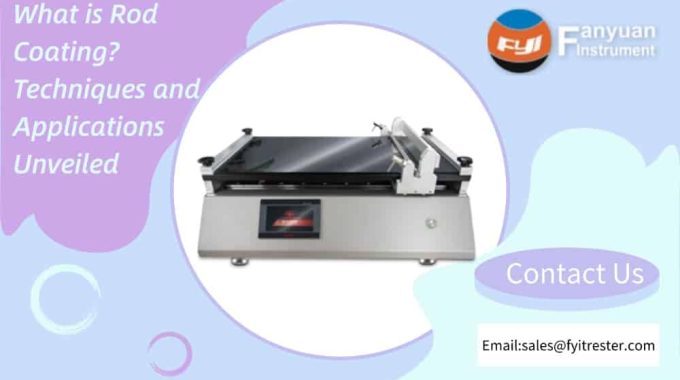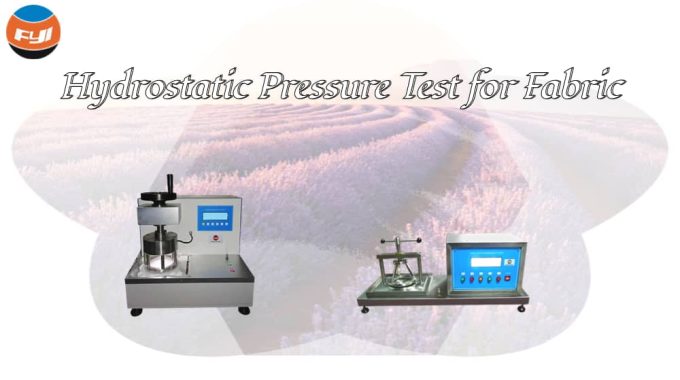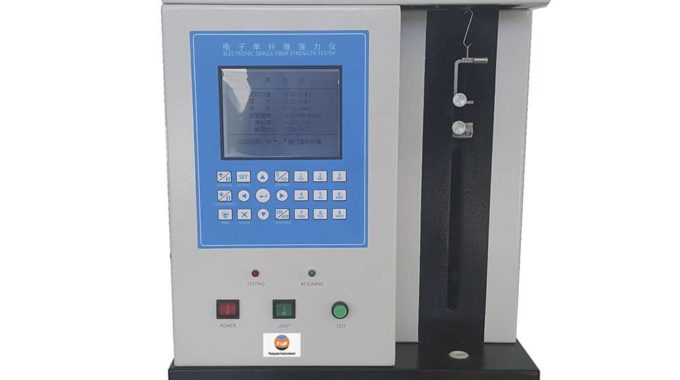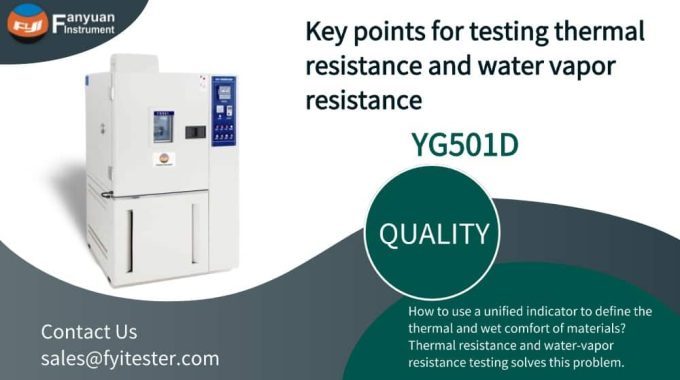
Key points for testing thermal resistance and water vapor resistance
For a long time, improving the comfort of textiles has been an important issue that experts in the textile field have been committed to solving. From the initial natural fibers such as cotton, linen, silk and wool, to the later chemical fibers such as polyester and nylon, people have been continuously conducting research on the comfort of textiles in different fields. In particular, the thermal and wet comfort of textiles is the most intuitive and important fabric comfort requirement for the human body. However, different textile materials have different properties and uses. How to use a unified indicator to define the thermal and wet comfort of materials? Thermal resistance and water-vapor resistance testing solve this problem.
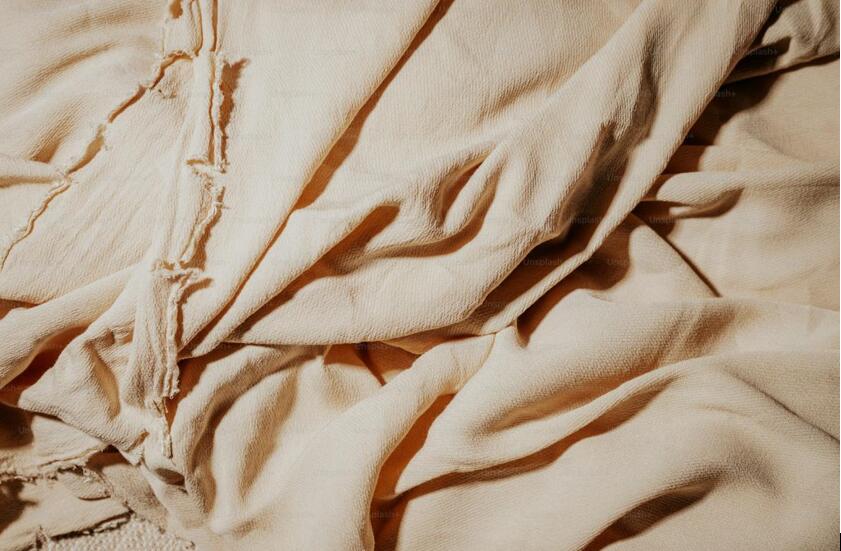
Contents
- 1 What are thermal resistance and water-vapor resistance?
- 2 What properties of textiles can be characterized by the test results of thermal resistance and water-vapor resistance of textiles? What is the testing principle?
- 3 What are the relevant standards for the two tests at home and abroad? What are the differences between them?
- 4 What are the laboratory testing steps and precautions for the testing?
- 5 Which products or product standards require thermal resistance and water-vapor resistance testing, and what is the significance of this test for corporate products?
What are thermal resistance and water-vapor resistance?
Thermal resistance and water-vapor resistance are two important parameters that affect the thermal and moisture comfort of clothing. Their measurement methods are of great significance for studying and improving the thermal and moisture comfort of clothing.
Thermal resistance: The human body dissipates heat mainly in two ways: sensible heat (dry heat) and latent heat (evaporative heat dissipation). Therefore, the indicators that affect the thermal and hygroscopic comfort of clothing are mainly the thermal permeability (thermal resistance) and water-vapor permeability (wet resistance) of clothing.
The heat flow resistance generated by the temperature gradient in the clothing layer is called thermal resistance (m².℃/W). Its physical meaning is the ratio of the temperature difference between the two sides of the clothing layer to the heat flow per unit area of the clothing vertically, which reflects the thermal insulation and warmth-keeping ability of the clothing. There are many ways to characterize the thermal insulation performance of clothing. Clo is currently an internationally accepted indicator. In 1941, American scholars Gagge, Burton and etc. defined: In a room with a temperature of 21℃, a humidity of less than 50%, and a wind speed of 0.1 m/s, an adult male (metabolic heat production is about 58.15 W/m²) sitting quietly or doing light mental work feels comfortable and can maintain an average skin temperature of about 33 °C. The thermal insulation of the clothing he wears is 1clo, which is equal to 0.155 m².℃/W.
Wet resistance: Clothing wet resistance (m·Pa/W) is the water-vapor permeability resistance of clothing, which refers to the ratio of the water vapor pressure difference on both sides of the clothing layer to the evaporative heat flow rate passing vertically through the unit area of clothing. Before sweating, people transfer the water vapor emitted by the human body in the form of insensible sweat (latent heat). Under comfortable conditions, evaporative heat dissipation in the form of latent heat accounts for about 1/4 of the total heat dissipation. Under intense exercise, once the heat dissipation of the human body cannot be balanced with the heat production of the human body, the human body will definitely dissipate heat in the form of sweat. Among them, a very important factor affecting evaporative heat dissipation is the wet resistance of clothing.
What properties of textiles can be characterized by the test results of thermal resistance and water-vapor resistance of textiles? What is the testing principle?
The thermal resistance value of textiles is an indicator of clothing comfort, which represents the thermal insulation performance of textiles. It can also be understood as resistance to heat. The larger the thermal resistance value, the better the thermal insulation performance. Conversely, the smaller the thermal resistance value, the worse the thermal insulation performance.
The test principle of thermal resistance is to cover the sample on the test board. The test board, the surrounding heat ring and the bottom protective plate can maintain a constant temperature, so that the heat of the test board can only be dissipated through the sample and the air can flow parallel to the upper surface of the sample. After the test conditions reach stability, the heat flow through the sample is measured to calculate the thermal resistance value of the sample.
The water-vapor resistance value of textiles is also an indicator of clothing comfort, which represents the resistance of textiles to water-vapor. The larger the water-vapor resistance value, the greater the resistance to water-vapor, and the worse the comfort of clothing. Conversely, the smaller the water-vapor resistance value, the smaller the resistance to water-vapor, and the better the comfort of clothing. The principle is to cover the test board with a breathable but impermeable film. The water entering the test board evaporates and passes through the film in the form of water vapor, so no liquid water contacts the sample. After the sample is placed on the film, the heat flow required to keep the test plate at a constant temperature under a certain water evaporation rate is measured, and the sample water-vapor resistance is calculated together with the water vapor pressure passing through the sample.
What are the relevant standards for the two tests at home and abroad? What are the differences between them?
At present, the commonly used thermal resistance and water-vapor resistance test standards are: domestic GB/T 11048-2018 Textiles-Physiological effects-Measurement of thermal and water-vapor resistance under steady-state conditions (sweating guarded-hotplate test), GB/T 35762-2017 Textiles-Test method for thermal transmittance-Flat plate test, and foreign ISO 11092:2014 Textiles — Physiological effects — Measurement of thermal and water-vapor resistance under steady-state conditions (sweating guarded-hotplate test).
Among them, GB/T 11048-2018 is equivalent to ISO 11092:2014. Compared with GB/T 35762-2017, GB/T 11048-2018 has certain differences in test equipment and test environment, and of course, the final test results are not comparable.
What are the laboratory testing steps and precautions for the testing?
The test of thermal resistance should pay attention to the monitoring of temperature, humidity and wind speed throughout the test. Temperature, humidity and wind speed have a certain influence on the thermal resistance value. The size of the sample should cover both the test plate and the protective plate. The sample is required to be flat and wrinkle-free. The side that usually contacts the human skin faces the test plate. In order to make the sample fully stable, the stabilization time needs to be appropriately extended according to the thickness of the sample.
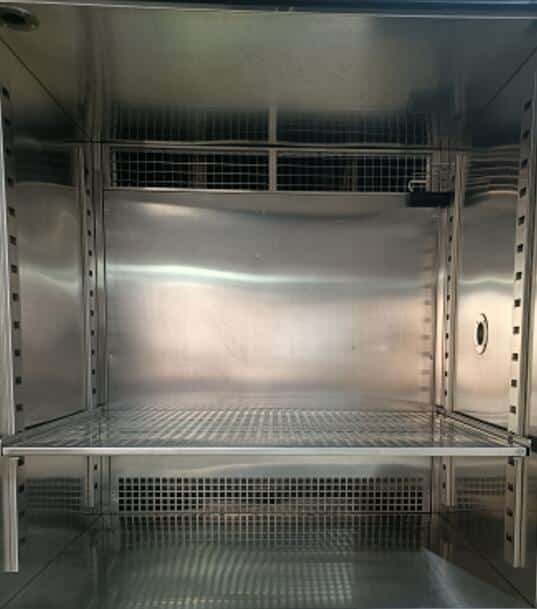
For water-vapor resistance, it is necessary to cover it with a breathable but impermeable standard film for operation. When laying the film, it is necessary to pay attention to no bubbles, no damage to the film, and to seal it tightly around to ensure that no liquid water can penetrate the film. Because once there are bubbles, an air layer is generated, or the film is damaged, liquid water penetrates the film and wets the sample, or the test board is not sealed tightly around, and liquid water leaks from all sides, it will affect the test results and cause the test to fail.
Which products or product standards require thermal resistance and water-vapor resistance testing, and what is the significance of this test for corporate products?
Generally, products that require thermal insulation performance will require thermal resistance testing, such as knitted underwear, cotton clothes, quilts, and various flakes used as fillers.
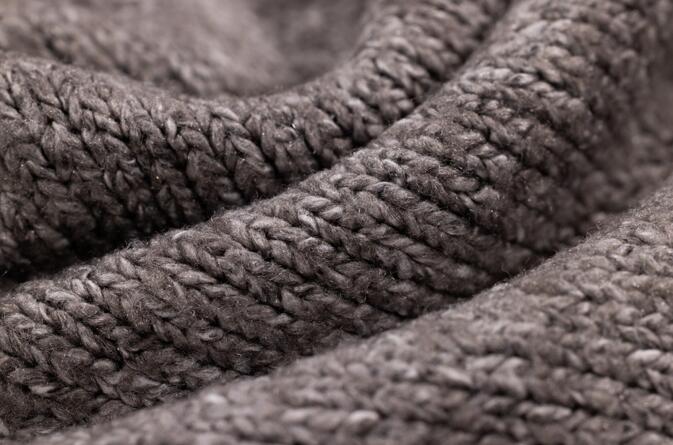
Some coated fabric clothing will require water-vapor resistance testing because the value of coated fabrics is generally higher than that of ordinary fabrics, which affects the comfort of wearing clothing.
The two tests can well simulate the ability of fabrics to exchange heat and moisture in a specific environment and can intuitively express the thermal insulation performance and thermal and moisture comfort performance of textiles, which has a good guiding significance for enterprises to select fabrics and position products.
